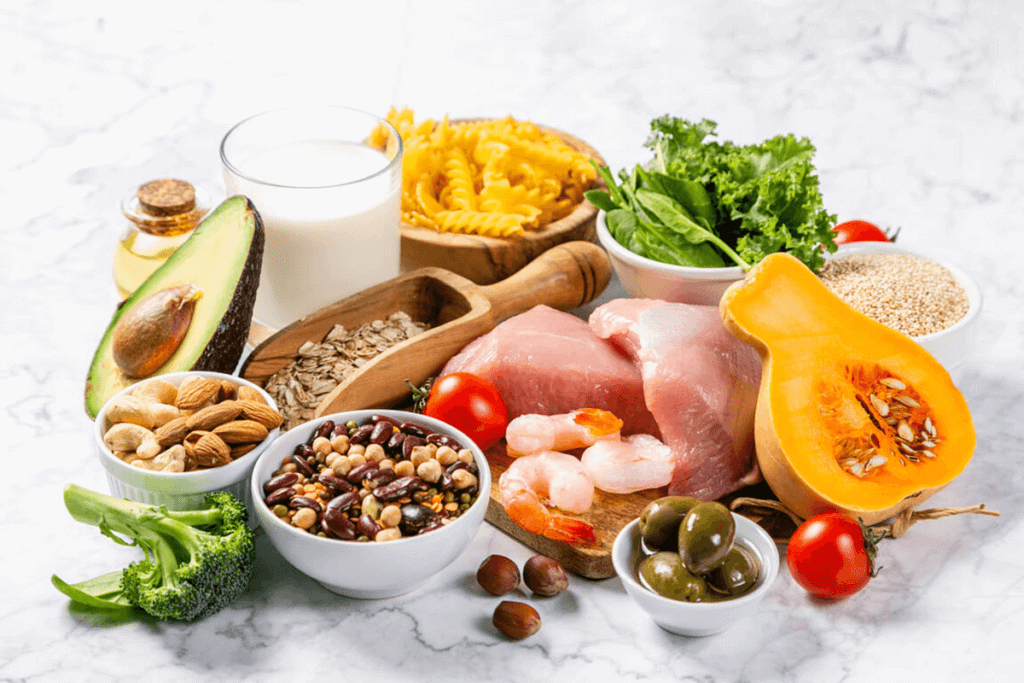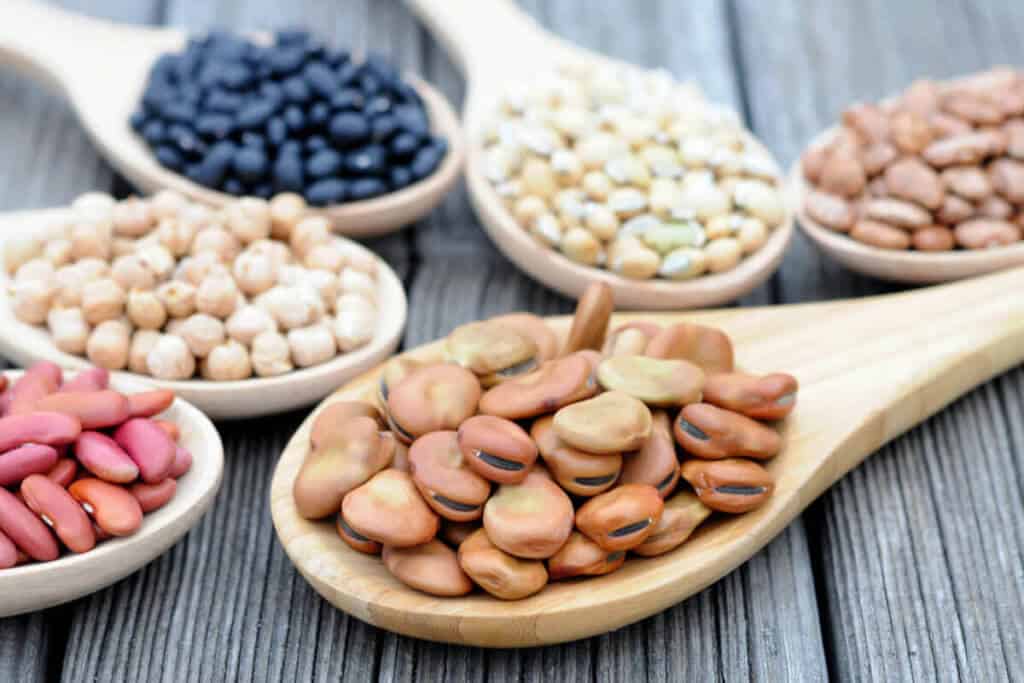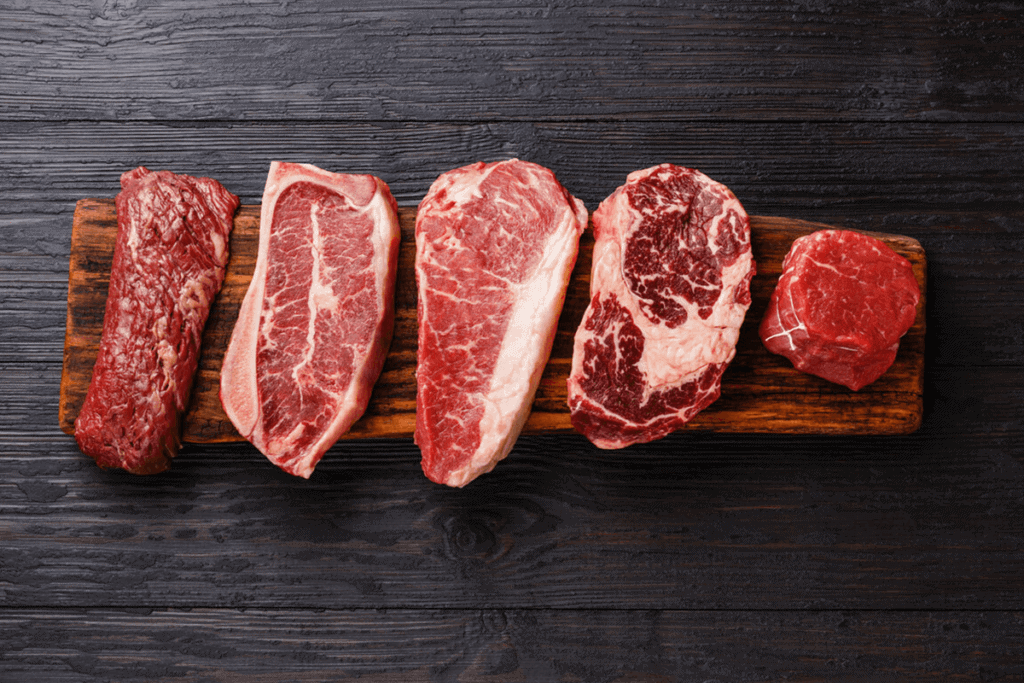What is the DASH diet?
The Dietary Approaches to Stop Hypertension (DASH) diet is a dietary pattern recommended to improve cardiovascular health and manage hypertension (high blood pressure). The diet emphasizes the intake of minimally-processed, blood pressure-lowering foods and nutrients, and limits the intake of foods and nutrients that may contribute to hypertension. (5)
DASH diet-approved foods include:
- Beans and legumes
- Fruit
- Lean meats (e.g., poultry, fish)
- Low-fat dairy
- Nuts and seeds
- Vegetables
- Whole grains (3)(5)(13)(19)
Key nutrients emphasized on the DASH diet include protein, fiber, and the minerals calcium, magnesium, and potassium. (5)(13)(19) Research has shown that foods rich in these key minerals may help prevent or improve hypertension by supporting the function and relaxation of the endothelium, the cells lining blood and lymphatic vessels. (5) Furthermore, the DASH diet also provides guidelines for foods that should be limited, including sodium, sugar, and saturated fat. (3)(13)(19)
DASH diet guidelines
Outlined below are ten general guidelines to follow on the DASH diet.
1. Consume six to eight servings of grains per day, primarily whole grains such as oats, wheat, and millet. (3)(13)
2. Consume four to five servings of vegetables per day. Incorporate a variety of vegetables (e.g., starchy, non-starchy, various colors) and emphasize the intake of green leafy vegetables, such as broccoli, collards, kale, mustard greens, and spinach. (3)(13)
3. Consume four to five servings of fruit per day. Whole, low-glycemic index (GI) fruits are best. (3)(13) Examples of low-GI fruits include apples, berries, citrus fruit, peaches, and plums. (10)
4. Consume a variety of protein sources, with an emphasis on plant-based sources. Individuals should consume four to five servings per week of beans, legumes, nuts, and seeds. Consume no more than six servings per day of animal proteins, primarily composed of lean meats (e.g., poultry and fish), low-fat dairy, and eggs. Processed and cured meats should be avoided entirely as they have been shown to contribute to hypertension. (3)(5)(13)

Did you know? According to the Centers for Disease Control and Prevention, approximately 70% of sodium intake comes from processed and prepackaged food, such as canned and frozen foods, lunch meats, pre-made sauces and dressings, and white bread. (6)8. Consume five or less servings of sweets per week. (13) Added sugars, such as those commonly found in baked goods and sugar-sweetened beverages, should account for less than 10% of your total daily caloric intake. (3) 9. Limit intake of saturated fat. Similar to sugar, saturated fats should account for less than 10% of your total daily caloric intake. (3) Examples of foods high in saturated fat include red meat (e.g., beef, pork) and high-fat dairy products. (8) 10. Moderate consumption of alcohol. Women should limit alcohol intake to a maximum of one drink per day, while men should not consume more than two drinks per day. (3) Download a handout on the DASH diet.

Health benefits of the DASH diet
While typically considered a dietary approach for hypertension, research has shown that the DASH diet may provide a number of health benefits and improve various cardiovascular and metabolic conditions. The DASH diet has also been associated with a reduced risk of colorectal cancer and all-cause mortality. (5)Cardiometabolic effects
Research has demonstrated that the DASH diet may have beneficial effects on blood pressure, as well as blood sugar, lipid (e.g., cholesterol, triglycerides), and serum high-sensitivity C-reactive protein (hs-CRP) levels, (16)(20) a measure of inflammation in the body used to assess an individual’s risk for cardiovascular disease. (21) Other indicators of cardiovascular function, including carotid intima–media thickness (cIMT) and pulse wave velocity (PWV), have been shown to benefit from adherence to the diet. (12)Cardiovascular conditions
While the benefits of the DASH diet in cases of hypertension are widely accepted and supported by numerous clinical trials, (17)(18) studies have also demonstrated that adherence to the diet also reduces the risk of cardiovascular disease. One study examining the association between a DASH dietary pattern and cardiovascular disease in a population-based sample reported a reduced risk of stroke, cardiovascular disease, and cardiovascular disease-related mortality. (11) Results from another trial found that the DASH diet was beneficial for the prevention of heart failure in adults. (4)
Metabolic conditions
In addition to improvements in cardiovascular health, adherence to a DASH-style diet may benefit individuals with certain metabolic conditions, such as hyperlipidemia, overweight/obesity, insulin resistance, and type 2 diabetes. (1)(2)(3)(5) The DASH diet has also been associated with a reduced risk of developing kidney disease and gout. (14)(15)Compliance to a DASH diet plan
Despite its many benefits, national adherence to the DASH diet remains low and further strategies are needed to implement this dietary pattern as a public health intervention. Digital health tools, which are largely accessible, may improve individual engagement and support sustainable dietary and lifestyle changes. One trial investigating the effects of a weight loss intervention found that a digital approach was more effective than a non-digital approach in promoting engagement and weight loss. More research is needed to identify the best delivery forms for the DASH diet specifically. (19)The bottom line
The DASH diet has been proven as an effective intervention and preventive measure for a number of cardiovascular and metabolic health conditions, including cardiovascular disease, stroke, hyperlipidemia, overweight and obesity, insulin resistance, kidney disease, gout, and colorectal cancer. Before making dietary changes, be sure to speak to your healthcare practitioner to find out if the DASH diet is right for your wellness plan.Help more patients.
right in your Fullscript account!
New to Fullscript? Sign up now.
- Bazzano, L. A., Green, T., Harrison, T. N., & Reynolds, K. (2013). Dietary approaches to prevent hypertension. Current Hypertension Reports, 15(6), 694–702.
- Bricarello, L.P., Poltronieri, F., Fernandes, R., Retondario, A., de Moraes Trindade, E.B.S., & de Assis Guedes de Vasconcelos, F. (2018). Effects of the Dietary Approach to Stop Hypertension (DASH) diet on blood pressure, overweight and obesity in adolescents: A systematic review. Clinical Nutrition ESPEN, 28, 1-11.
- Campbell, A.P. (2017). DASH eating plan: An eating pattern for diabetes management. Diabetes Spectrum, 30(2), 76-81.
- Campos, C.L., Wood, A., Burke, G.L., Bahrami, H., & Bertoni, A.G. (2019). Dietary Approaches to Stop Hypertension diet concordance and incident heart failure: The multi-ethnic study of atherosclerosis. American Journal of Preventive Medicine, 56(6), 819–826.
- Challa, H.J., Tadi, P., & Uppaluri, K.R. (2019). DASH diet (Dietary Approaches to Stop Hypertension). StatPearls. Treasure Island (FL): StatPearls Publishing.
- Centers for Disease Control and Prevention. (2017). Get the facts: Sources of sodium in your diet. Retrieved from https://www.washingtonnephrology.com/wp-content/uploads/2018/03/sodium.pdf
- Chiu, S., Bergeron, N., Williams, P.T., Bray, G.A., Sutherland, B., & Krauss, R.M. (2016). Comparison of the DASH (Dietary Approaches to Stop Hypertension) diet and a higher-fat DASH diet on blood pressure and lipids and lipoproteins: A randomized controlled trial. The American Journal of Clinical Nutrition, 103(2), 341–347.
- Hu, F.B., Stampfer, M.J., Manson, J.E., Ascherio, A., Colditz, G.A., Speizer, F.E., … Willett, W.C. (1999). Dietary saturated fats and their food sources in relation to the risk of coronary heart disease in women. The American Journal of Clinical Nutrition, 70(6), 1001–1008.
- Hypertension Institute. (n.d.). DASH 1 & 2 diet. Retrieved from https://hypertensioninstitute.com/service/dash-1-2-diet/
- Jenkins, D. J., Srichaikul, K., Kendall, C. W., Sievenpiper, J. L., Abdulnour, S., Mirrahimi, A., … Leiter, L. A. (2011). The relation of low glycaemic index fruit consumption to glycaemic control and risk factors for coronary heart disease in type 2 diabetes. Diabetologia, 54(2), 271–279.
- Jones, N.R.V., Forouhi, N.G., Khaw, K., Wareham, N.J., & Monsivais, P. (2018). Accordance to the Dietary Approaches to Stop Hypertension diet pattern and cardiovascular disease in a British, population-based cohort. European Journal of Epidemiology, 33, 235–244.
- Maddock, J., Ziauddeen, N., Ambrosini, G. L., Wong, A., Hardy, R., & Ray, S. (2018). Adherence to a Dietary Approaches to Stop Hypertension (DASH)-type diet over the life course and associated vascular function: A study based on the MRC 1946 British birth cohort. The British Journal of Nutrition, 119(5), 581–589.
- National Heart, Blood, and Lung Institute. (n.d.). DASH eating plan. Retrieved from https://www.nhlbi.nih.gov/health-topics/dash-eating-plan
- Rai, S. K., Fung, T. T., Lu, N., Keller, S. F., Curhan, G. C., & Choi, H. K. (2017). The Dietary Approaches to Stop Hypertension (DASH) diet, Western diet, and risk of gout in men: Prospective cohort study. BMJ, 357, j1794.
- Rebholz, C. M., Crews, D. C., Grams, M. E., Steffen, L. M., Levey, A. S., Miller, E. R., 3rd, … Coresh, J. (2016). DASH (Dietary Approaches to Stop Hypertension) diet and risk of subsequent kidney disease. American Journal of Kidney Diseases, 68(6), 853–861.
- Sakhaei, R., Shahvazi, S., Mozaffari-Khosravi, H., Samadi, M., Khatibi, N., Nadjarzadeh, A., … Salehi-Abargouei, A. (2018). The Dietary Approaches to Stop Hypertension (DASH)-style diet and an alternative Mediterranean diet are differently associated with serum inflammatory markers in female adults. Food and Nutrition Bulletin, 39(3), 361-376.
- Saneei, P., Salehi-Abargouei, A., Esmaillzadeh, A., & Azadbakht, L. (2014). Influence of Dietary Approaches to Stop Hypertension (DASH) diet on blood pressure: A systematic review and meta-analysis on randomized controlled trials. Nutrition, Metabolism and Cardiovascular Diseases, 24(12), 1253-1261.
- Shah, P.T., Maxwell, K.D., & Shapiro, J.I. (2015). Dashing away hypertension: Evaluating the efficacy of the dietary approaches to stop hypertension diet in controlling high blood pressure. World Journal of Hypertension, 5(4), 119-128.
- Steinberg, D., Bennett, G. G., & Svetkey, L. (2017). The DASH diet, 20 years later. JAMA, 317(15), 1529–1530.
- Tiong, X.T., Shahirah, A.N., Pun, V.C., Wong, K.Y., Fong, A.Y.Y., Sy, R.G., … Venkataraman, K. (2018). The association of the dietary approach to stop hypertension (DASH) diet with blood pressure, glucose and lipid profiles in Malaysian and Philippines populations. Nutrition, Metabolism and Cardiovascular Diseases, 28(8), 856-863.
- Yeh E. T. (2005). High-sensitivity C-reactive protein as a risk assessment tool for cardiovascular disease. Clinical Cardiology, 28(9), 408–412.
